Recent Posts
Do Not Let Black Water Ruin Your Day!
4/17/2024 (Permalink)
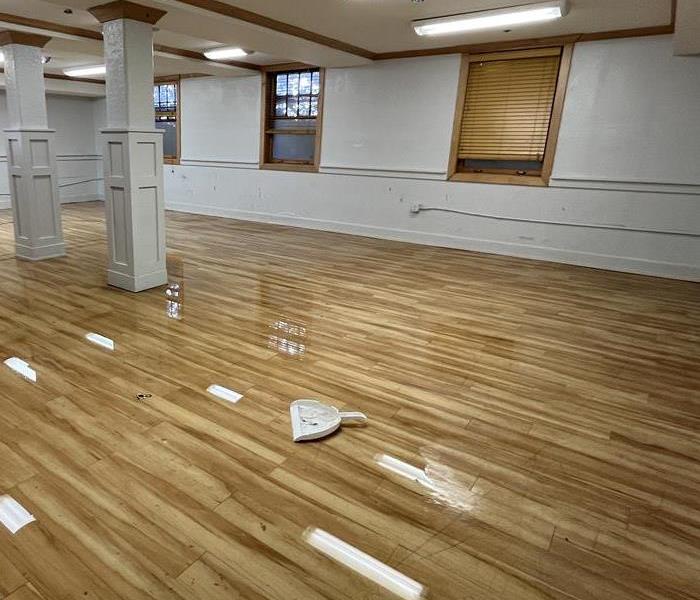 This flooded room was caused by a severe rain storm in Pflugerville, Texas. This picture shows standing water on a wood floor
This flooded room was caused by a severe rain storm in Pflugerville, Texas. This picture shows standing water on a wood floor
When home or business property in Pflugerville, Texas is flooded, it may have negative impacts on you. Flood water can damage equipment, furniture, files and merchandise. When hurricanes and heavy storms occur, flooding becomes an even bigger concern because the water typically causes sewer backups, which leads to bacteria-filled black water. Call SERVPROof Pflugerville when flood water damages your home or business.
Are there Different Types of Contaminated Water?
Experts classify water into three-categories to describe the level of contaminants in different types of water. The first category is “clean water,” which comes from a fresh supply line, such as a sprinkler system or sink faucet. The second category is “gray water,” which comes from sources like washing machine drains. This water is dirty but not highly toxic. “Black water” is the third and most dangerous category. Flood water, sewage and drain backups, and toilet overflows fall into this category because the contaminants in these waters are so toxic.
When your home or business property is affected by sewage water, it contaminates the air, floor and everything it touches. If not properly sanitized, unsafe water can continue to be harmful to people. Whether it is your home, retail property, manufacturing facility or warehouse, it can put people’s health at risk. Safety concerns can cause a business to have to close its doors, which only results in further loss.
What Can Be Done About Harmful Flood Water?
If you find yourself dealing with water damage, act quickly and call SERVPRO of Pflugerville. We are available 24-hours a day and will assess the damage, extract the water safely, remove contaminated articles, and sanitize the area according to IICRC standards for safety.
SERVPRO of Pflugerville should be your first choice for any residential or commercial water damage. Our team of professionals is trained to assess the damage, identify potential threats, and respond quickly to restore your property to preloss condition. SERVPRO of Pflugerville is available 24/7 by calling 512-990-4776
How To Use a Fire Extinguisher
2/13/2024 (Permalink)
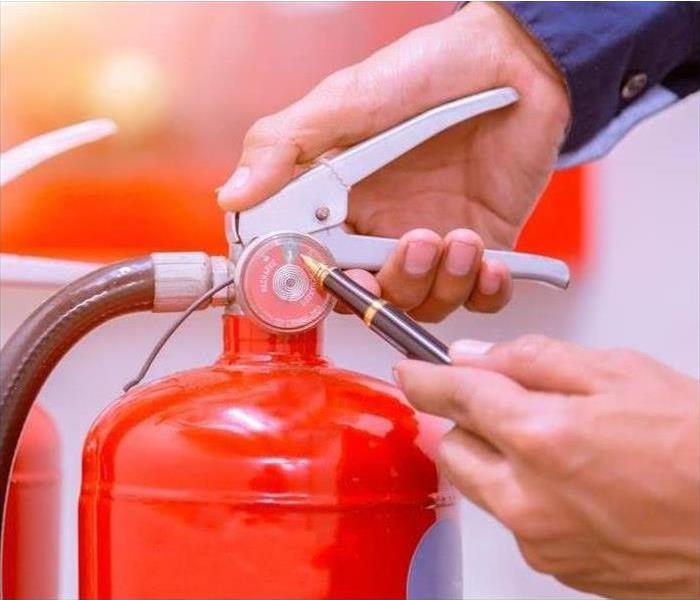 Take time now to prepare for the unexpected.
Take time now to prepare for the unexpected.
As a homeowner in Austin, TX, you should prioritize safety, for both your family and your property. That includes preparing ahead of time for a home fire. While you consider evaluation routes and emergency contacts, it's also beneficial to supply your home with a fire extinguisher as the first line of defense. The red canisters may seem a bit intimidating, but they are designed to help residents. Here are a few tips for wielding one with better care.
1. Pick Appropriate Locations
You want to have extinguishers near areas likely to have a fire; therefore, consider purchasing one for the kitchen and garage. These locations often have several appliances or electrical equipment capable of exposing the house to fire damage. Is your place two stories? If so, put one upstairs in a spot that is easy to access; furthermore, make other family members aware of where they are, and teach them how to use them.
2. Review Procedures
Don't expect to know how to handle these containers. Practice with them. Pick them up and examine the parts. You want to know if they will be able to physically use the device. If it's too heavy consider investing in smaller units. Next, go over the steps for using a fire extinguisher. A popular phrase is P.A.S.S.: pull the pin, aim low, squeeze the handle, and sweep from side to side. As you release the agent, you want to stay as close to the base of the flame as possible. This could help eliminate the flames.
3. Call for Help
Once you've suppressed the blaze, call in a fire restoration company to inspect the premises. The workers can test the area to determine the extent of the problem and recommend recovery services. Whether it's a kitchen fire or lightning strike, they can offer assistance in repairs as well as how to salvage ruined materials. In fact, they have special equipment to remove smoky aromas and remove soot from walls and ceilings.
Take time now to prepare for the unexpected. Purchase safety equipment, and learn how to use a fire extinguisher. It could save your property.
4 Ways to Prepare Your Business for a Winter Storm
1/3/2024 (Permalink)
 If your building is damaged during a winter storm, then a cleanup and repair company can help.
If your building is damaged during a winter storm, then a cleanup and repair company can help.
When you are expecting severe weather in Austin, TX, you should take steps to be prepared. A winter storm can cause a lot of damage to your building, so use the following tips to minimize its effect on your business.
1. Stay Informed
One of the most important things you can do to prevent storm damage is to keep updated with any new information. The weather can be unpredictable and may sometimes change quickly. Watch the news to identify any changes in the situation so you can alter your plans if necessary.
2. Keep the Building Warm
During a storm, the temperature may drop. If it gets too low, you could end up with frozen pipes which could cause a pipe break. Water may flood your building and cause damage to its structure as well as the items inside. In order to prevent this, make sure to keep the heat on even after you leave the building. You may want to insulate any exposed pipes and leave doors open to allow heat to circulate as well.
3. Check Doors and Windows
The areas around doors and windows often deteriorate more quickly than other places in the building. If these are not in good shape, they won’t be able to keep out moisture properly. Make sure that all windows and doors are sealing and well-insulated.
4. Inspect the Exterior
During a winter storm, damage to the exterior of the building can become worse. Cracks in the walls can let water in and can contribute to the growth of mold. Loose roof tiles can be blown off and leave areas exposed. Check everything carefully and have repairs done if necessary.
If your building is damaged during a winter storm, then a cleanup and repair company can help. They can remove any water that has entered the building, perform mitigation and make repairs. If any belongings have been damaged, they can salvage many of these as well.
4 Causes of Crawl Space Flooding in Your Home
11/3/2023 (Permalink)
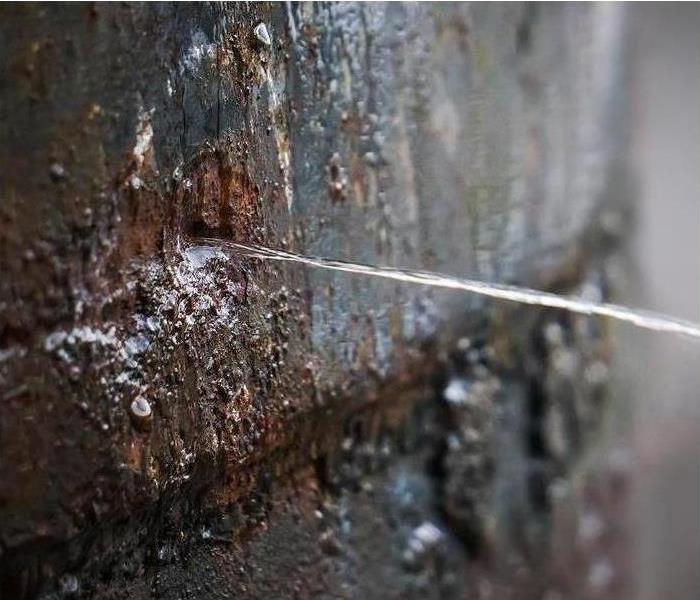 If a pipe cracks or bursts in your home, the water will ultimately flow into the lowest space in your house.
If a pipe cracks or bursts in your home, the water will ultimately flow into the lowest space in your house.
A wet crawl space may seem like a minor issue. However, if left untreated, it could lead to mold growth in your Austin, TX, home. A persistent flow of water in the crawl space could also spread to the main part of your house.
That is why you should regularly check this part of your home for signs of excess water. You should also take steps to prevent these common causes of crawl space flooding.
Downspout Problems
A downspout aimed too close to your home can cause water buildup in your crawl space. Point your downspout away from the foundation of your home and add a splash block to guide the water away from your property.
Over-Watered Flower Beds
You may not think of your flower bed as a potential cause of a wet crawl space. But overwatering of your plants does not only cause them to die. It can also lead to a flood in your home. To prevent this problem, put base layers into your flowerbeds to catch excess water.
Poor Slope Grading
If the landscape outside your home is not sloped properly, water will flow back into the crawl space. The slope should be six to eight inches away from the walls of the foundation. Winter snow and ice can change the sloping, so be sure to check the grading each spring.
Broken Water Lines
If a pipe cracks or bursts in your home, the water will ultimately flow into the lowest space in your house. Keep your eye out for any obvious puddles or wet areas on your property, as these may point you to the location of the ruptured pipe.
If you can't find the leaky pipe or the cause of your wet crawl space, emergency restoration professionals can help. They will not only locate and stop the source of the water, but they can also clean and dry any damaged items or structures.
Mold’s 6 Most Common Hidden Locations in Commercial Buildings
10/6/2023 (Permalink)
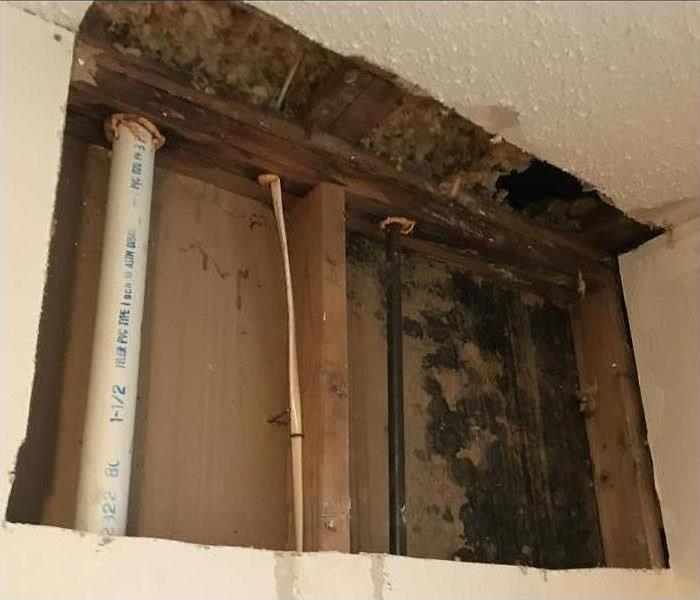 Mold cleanup and removal in Pflugerville, TX.
Mold cleanup and removal in Pflugerville, TX.
Mold's Most Common Hidden Locations
Mold requires water and food to thrive. Food can be as easy as dust particles or skin cells which are found almost everywhere in most commercial buildings. That means the unpredictable element in mold growth is obtaining a water source. Although high humidity can allow for colony reproduction, most often the source of mold’s life-beginning liquid is a result of water damage. Here are six of mold’s most common hidden locations in commercial buildings in Pflugerville, TX.
1. Ductwork often contains moisture during summer’s cooling season. When the duct lining materials collect moisture, mold can quickly form.
2. Carpet has a smorgasbord of food sources for hungry molds. Food crumbs, skin cells, and dirt can easily combine with moisture inside the carpet fibers. When the liquid reaches the pad, the carpet can stay wet for a long time, and that often means a long life for mold.
3. Electrical equipment in basements or closets provides warm air for mold to thrive in. If water from a leaky pipe or humid air appears near electrical equipment, mold growth can appear in as little as 48 hours.
4. Ceiling tiles love to absorb water and feed mold. Since mechanical piping and sprinkler systems are typically suspended above ceiling tiles, when the tubes develop even a very small leak, mold can appear.
5. Paper is a favorite mold meal. Whether documents are stored in a basement or inside a dark closet, if the paper gets wet, mold often follows.
6. Appliance drain pans can hide mold. When appliances collect condensation or defrosting water in the drain pans, mold can quickly develop. If the drip is constant, the colonies can thrive and send out spores to other parts of the building.
Mold can often be hidden in these six secluded spots, but building managers understand when conditions are right the spores can spring up anywhere. For that reason, a good preventative program begins with trained personnel looking for signs of water damage. By identifying the conditions supporting mold growth, the need to call a professional remediation team is often eliminated.
Reasons To Purchase Interruption Insurance for Your Business
8/28/2023 (Permalink)
 Severe storm damage in Manda, TX.
Severe storm damage in Manda, TX.
Reasons To Purchase This Additional Policy
When a natural disaster or a plumbing problem renders your building in Manda, TX, unusable for a period of time, you will want to have a plan in place for continuing your business while you rebuild. Property insurance may cover the actual damage recovery done by restoration experts, but you need business interruption insurance to cover lost revenue or the expenses associated with temporary relocation.
Working Capital
Property insurance helps you cover the costs of water damage restoration. Additional coverage is needed for the myriad of other ways your business is impacted by a damaged building. Interruption insurance gives you working capital to handle continuity expenses:
- Lost revenue
- Utility payments
- Payroll coverage
- Relocation costs
You shouldn't have to worry about whether or not you will still have a business to run after you rebuild. Continuity coverage can give you the working capital you need to bridge the gap.
Ongoing Solution
Most problems that occur as the result of a storm are not quick fixes. You need coverage for problems that last longer than a few days. Your business interruption service can kick in as soon as 48 hours after your business experiences a loss due to stormy weather, but the payout can hold you over for an extended period of time.
Maintaining Momentum
Interruption insurance helps you maintain momentum and keep your business afloat. Many businesses without such coverage find it hard to recover after damages make it impossible to continue regular operations, and sometimes that results in a permanently closed business. Continuity coverage helps you keep going despite the difficulties that storm damage has caused.
As you rebuild, you shouldn't have to worry about whether or not your company will stay afloat. When you add an additional policy to your business owner's insurance portfolio that handles expenses associated with the interruption of your business, you can get peace of mind knowing that your income doesn't have to take a hit just because your building did.
How Does Mold Infest a Large Space?
8/22/2023 (Permalink)
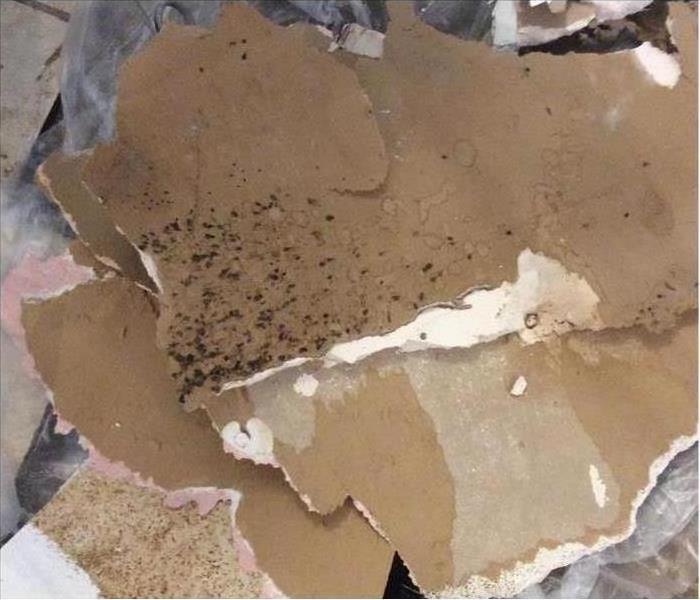 Mold removal on Manda, TX
Mold removal on Manda, TX
Understand These Three Things About Mold Growth
It's only a few fuzzy spots. Isn't that what homeowners in Manda, TX, tend to think about fungus? Surely with just a few sprays of bleach solution the problem will be solved. Nope. It's not that easy. In fact, that do-it-yourself mentality could actually encourage spreading mold throughout the space. Before you tackle the infestation on your own, understand these three things about mold growth.
1. It Is a Natural Decomposer
Spores such as black mold exist in nature as a functional source of decomposition. Existing everywhere, they combine with organic matter and liquid to break items down. For example, in the woods, it tackles the broken logs, helping the environment. However, in your home, it could eat away at drywall, flooring, ceiling tiles, and personal valuables. It's problematic, particularly in locations that are hot and humid. For that reason, you'll need to keep an eye out in bathrooms, kitchens and laundry rooms, anywhere that may be dark and have increased temperature.
2. It Moves Quickly
The tiny microbes enter your home regularly. You pick them up outside and bring them inside with you. In addition, they could find their way in as you open doors and windows. The air conditioner, then, can pick up, spreading mold to various rooms. If it lands on something wet, breeding begins with fungus feasting on whatever matter it has found. Within days, advancement can occur.
3. It Needs Removal
If you smell a musty odor or notice changes in structure contact a mold remediation company. Often the home kits can't find the source of the excess fluid, and they can't eradicate the depth of the invasion. Rather, the experts can assess the area, determining the extent of the trouble. Then, they'll put together a plan to remove anything contaminated. By taking it out, you secure the area. In addition, they can identify why it began, fixing the origin.
Don't think a few spots aren't a problem. Instead, it could be a sign of spreading mold. Specialists can minimize the hazard, clean it and restore the location.
Protect Your Business During a Thunderstorm
8/21/2023 (Permalink)
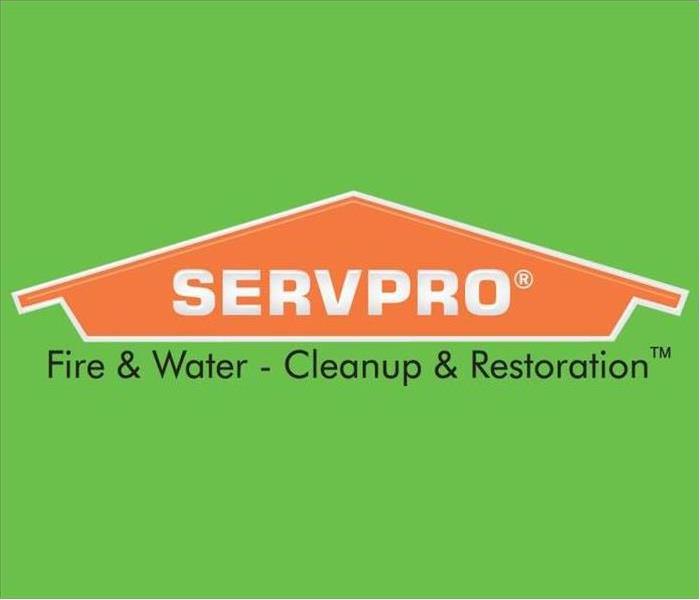 Severe rainstorms are no joke and many buildings have been devastated because they neglected to prepare properly.
Severe rainstorms are no joke and many buildings have been devastated because they neglected to prepare properly.
Thunderstorms are tricky because of how drastically they can vary in terms of severity. Mild thunderstorms are nothing more than a nuisance, while severe storms can wreck havoc on your commercial building. It's important to ensure that you're prepared for any type of rain storm, just in case. Follow these tips to keep your building in Austin, TX, safe.
Before the Storm
Preparation is key, no matter which type of emergency you're dealing with. Use the following safety checklist to see whether your building is prepared to take on high winds and other dangerous weather:
You have an emergency supply kit fully stocked and easily accessible.
You and your employees have learned and practiced proper emergency protocol.
You have designated a safe place in your building to shelter during the storm.
You have consulted your local fire department regarding proper lightning rod installation.
You have ensured that the trees and shrubbery surrounding your building are properly trimmed.
During the Storm
Assuming you have abided by the preceding and your building is adequately prepared to take on a severe rain storm, staying safe and calm during the thunderstorm should be a breeze. Simply make sure that everyone in the building stays sheltered in place for the duration of the storm. Stay tuned in to local emergency broadcasts for updates. Secure all doors and windows and shelter away from any glass paneling. Avoid using any plumbing or electrical equipment for the duration of the storm. Even if you think the storm has passed, you should still wait to leave until at least 30 minutes after the last thunderclap, or until your emergency broadcast radio gives the all clear signal.
Severe rainstorms are no joke and many buildings have been devastated because they neglected to prepare properly. Follow the above tips to help avoid letting your commercial building become another statistic. If your building does fall victim to storm damage, make sure to contact storm remediation experts as soon as you can.
Mitigating Water Damage After a Water Heater Fails
7/27/2023 (Permalink)
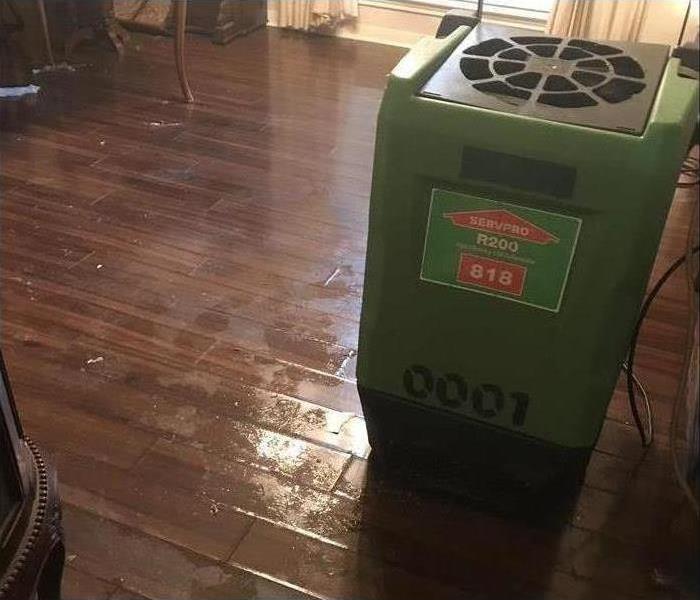 Mitigating water damage in a Cele, TX home
Mitigating water damage in a Cele, TX home
Mitigating Water Damage After a Water Heater Fails
A failed or leaking water heater can cause significant damage to your property, especially if it had gone unnoticed. These devices can lead to major flooding in homes and will probably require a mitigation and restoration company in Cele, TX, to clean and repair your system and property. Any company you call will typically follow the same procedure.
Shut off water supply
Remove equipment and water
Dehumidify the area
Remove damage
Restore property
Shut Off Water Supply
After experiencing a failed water heater, you will need to address the situation quickly to avoid significant damage. Before calling for help, you should find the water shutoff valve to stop the continued flow of water from the heater.
Remove Equipment and Water
Once the restoration company arrives, they might first assess the damage to your property before removing the broken water heater and extracting the excess water. To remove the flood, they will typically use shop vacs, pumps and possibly special trucks with built-in suction pumps, depending on the depth of the flooding.
Dehumidify the Area
After the leaking water heater and the flood are removed, the team will get to work drying and dehumidifying the affected space. It is necessary to make sure that the structure of the home is completely dry before getting to work on any repairs.
Remove Damage
While the space is drying, the restoration company will probably be removing damaged items as well as any structural damage like drywall or insulation. The removal of drywall is sometimes necessary, especially with significant flooding, because the wall cavities could have been exposed to excessive moisture, which may lead to mold.
Restore Property
Once the area is dry and all damage has been removed, the company you hired will begin restoring the property. Restoration companies are experts in returning your home to pre-disaster conditions, which means you will see no evidence of flood when they are done.
While a leaking water heater may not lead to a full-blown disaster, a failed tank can. If you experience such a failure, then seeking out a restoration professional might be your best option.
Flood Readiness
7/18/2023 (Permalink)
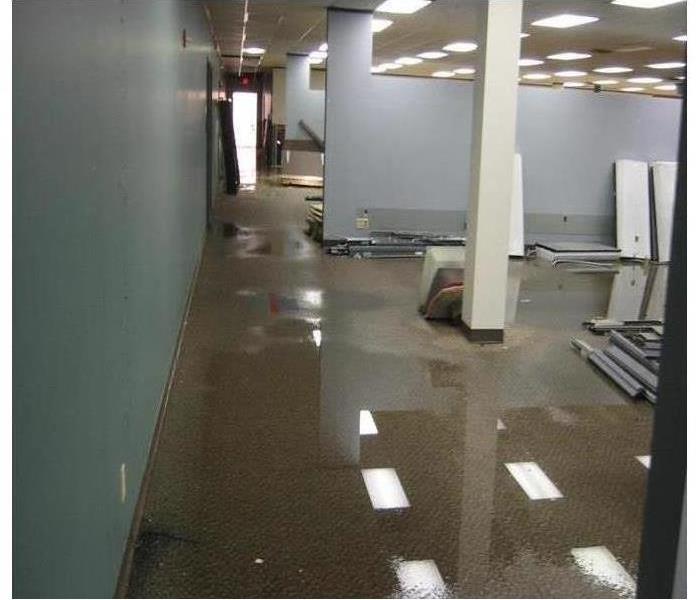 Commercial flooding in Pflugerville, TX
Commercial flooding in Pflugerville, TX
Flooding to your Pflugerville, TX business can be a very stressful event. Unfortunately, many insurance policies do not cover floods. A separate flood policy must be purchased. It is important to know the difference between flood damage and other types of storm damage so that you can make sure your commercial property is adequately protected.
Flood Definition
Many property owners think of floods as any unwanted standing water, whether from a broken appliance or a storm surge. However, according to FEMA (Federal Emergency Management Agency), to be characterized as a flood, the water damage must affect at least two acres or two separate properties and be caused by one of the following:
- Overflow of rivers, lakes and other inland bodies of water (whether due to erosion or excess rainfall)
- Tidal overflow
- Mudflow
- Surface water accumulation or runoff
Water damage caused by other means, such as a roof leak during a rainstorm, is not considered flood damage. In such cases, the claim should be filed with the standard property owner's insurance rather than on the flood policy.
Flood Mitigation
Although floods can cause serious problems, it is possible to minimize the damage to your business by taking some precautions. Use sandbags or inflatable dams to form a barrier around your building. You can fortify the barrier by securing windows and doors with plastic tarps. Move furniture, electronics and other important items to a safe location. This could be the second floor of your building or an off-site location. Keep electronic copies of important documents such as insurance policies. Make sure to have emergency supplies on hand and an emergency plan in place before flooding begins. When the water stops rising and it is safe to do so, begin drying out the property to prevent mold growth.
Unfortunately, it is impossible to prevent flood damage. If your commercial building suffers flooding, you may decide to contact a certified restoration company to help you get your business back to normal quickly and safely.
 This flooded room was caused by a severe rain storm in Pflugerville, Texas. This picture shows standing water on a wood floor
This flooded room was caused by a severe rain storm in Pflugerville, Texas. This picture shows standing water on a wood floor




 24/7 Emergency Service
24/7 Emergency Service








